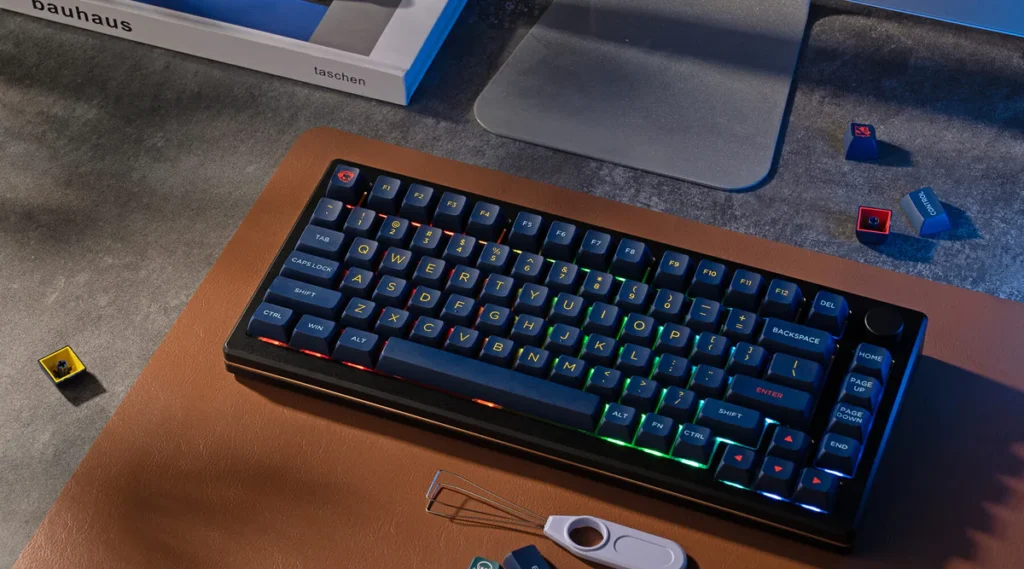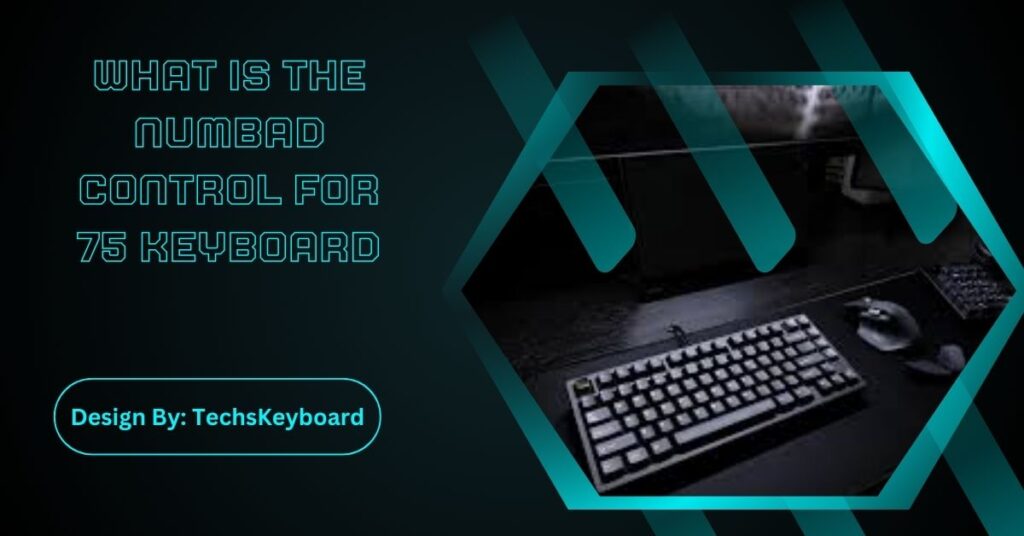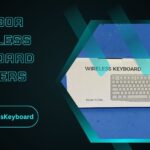A 75% keyboard is a compact layout that saves desk space yet retains essential keys. Though it lacks a dedicated numpad, users can access numpad functions via layers, remapping, or external devices.
Keyboards come in all shapes and sizes, with each one designed for different needs and preferences. Among the most popular options is the 75% keyboard, known for its compact size and functionality. But what about the numpad?
Can you use one without a full-size keyboard? Yes, you can! This article will explain everything you need to know about numpad control on a 75% keyboard, step by step, in simple terms.
First, let’s understand what a 75% keyboard is and why it’s a favorite among users.
What is a 75% Keyboard?

A 75% keyboard is smaller than a full-size keyboard but isn’t as tiny as the ultra-compact 60% keyboards. It has about 80–84 keys, depending on the model, which is roughly 75% of the keys found on a traditional keyboard. The design saves space while keeping the most-used features, like function keys, arrow keys, and other important keys, close at hand.
Key Features of a 75% Keyboard
- Compact and Sleek: Takes up less space on your desk, creating a cleaner and more organized look.
- Includes Essential Keys: Unlike 60% keyboards, you get a function row, arrow keys, and often a page-up and page-down cluster.
- Customizable: Many models allow you to remap keys, making them adaptable for gaming, work, or general use.
Why Are They Popular?
The 75% keyboard appeals to people who need a practical and portable keyboard without feeling cramped. Gamers love it for its responsiveness, while office workers prefer it for saving desk space. However, since it doesn’t include a dedicated numpad, some users are left wondering how to input numbers efficiently. Don’t worry! There are ways around this.
75% Keyboards vs Other Layouts
Here’s a quick comparison of keyboard layouts to help you understand why 75% keyboards are unique:
| Keyboard Layout | Key Count | Size | Includes Numpad? | Who It’s For? |
| Full-Size | ~104 keys | Large | Yes | Accountants, heavy users of numerical input |
| 75% Keyboard | ~80–84 keys | Medium | No | Compact desk setups for gaming, office work |
| 60% Keyboard | ~61 keys | Small | No | Developers, minimalists, casual gamers |
| Tenkeyless (TKL) | ~87 keys | Medium | No | Gamers, professionals needing space for mouse movement |
A Brief History of Compact Keyboards:
Compact keyboards weren’t always as popular as they are now. They first gained traction with gamers, who wanted more room for their mouse movements during fast-paced games. Over time, their lightweight and portable designs caught the attention of professionals who wanted a neat desk setup for productivity.
The 75% layout became a sweet spot in keyboard design. It retained essential keys for work and gaming while eliminating the need for bulky space. Today, 75% keyboards are a common choice for anyone looking for functionality in a smaller package.
How to Use Numpad Control on a 75% Keyboard?
Since 75% of keyboards don’t include a dedicated numpad, you’ll need to use alternative methods. Luckily, manufacturers and software solutions have made it easy to access numpad functionality.
1. Use the Keyboard’s Built-In Layer System
Most 75% keyboards include “layers” that allow keys to have more than one function. Manufacturers map numpad keys to existing letter keys, accessible by holding down a Fn (Function) button.
Example:
If U, I, O, J, K, L, and ; are repurposed for the numpad:
- Fn + U = 4
- Fn + I = 5
- Fn + O = 6
And so on.
You’ll need to check your keyboard’s manual or website to see if your model supports this.
2. Remap Keys with Software
For those who want full customization, software tools can help you set up custom numpad layers—or even reassign unused keys. Some popular options include:
- QMK Firmware: Perfect for tech-savvy users. This free, open-source tool allows complete control over your keyboard.
- VIA: A beginner-friendly software for remapping keys and adding macros.
- SharpKeys (Windows): For simple remapping tasks.
- Karabiner-Elements (macOS): Ideal for Mac users seeking flexibility.
Step-by-Step Guide to Key Remapping Using VIA Software:
- Download and install VIA software from your keyboard manufacturer’s website.
- Connect your keyboard to your PC or Mac.
- Open VIA and select the key you want to remap.
- Assign a numpad function (e.g., make the J key act as NumPad 1).
- Save your changes, and test!
3. Buy an External Numpad
If you work with numbers daily, an external numpad might be your best choice. These are handy standalone devices that connect via USB or Bluetooth. They give you all the functionality of a standard numpad without modifying your main keyboard.
Also Read: PC230a Wireless Keyboard Drivers – Complete Guide!
4. Use On-Screen Numpads
Another simple option is the on-screen keyboard available on Windows and macOS. You can easily access it as follows:
- For Windows, search “On-Screen Keyboard” in the Start menu.
- For macOS, go to System Settings > Accessibility > Keyboard Viewer.
While this isn’t ideal for heavy use, it’s a great backup option.
Pros and Cons of a 75% Keyboard:
Pros:
- Space-Saving: Perfect for small desks or minimalist setups.
- Portable: Lightweight and easy to carry for travel or remote work.
- Functional: Keeps essential keys like functions and arrows.
Cons:
- No Dedicated Numpad: Can be a hassle for those who frequently input numbers.
- Learning Curve: Layers and remapping might take some time to get used to.
Practical Tips for Numpad Control on a 75% Keyboard:

- Customize Your Layout: Experiment with software and layer shortcuts until you find a setup that fits your needs.
- Practice Using Layers: Spend a few minutes each day getting familiar with the layer system if your keyboard supports it.
- Invest in External Tools: If you frequently work with spreadsheets or calculators, consider an external numpad for an easier experience.
Why Choose a Compact Keyboard?
A compact keyboard, like the 75%, offers the best of both worlds—functionality and portability. Whether you’re gaming, working, or just want to clean up your desk, these keyboards offer flexibility with added customization options. By setting up numpad control, you can easily combine the advantages of a compact keyboard with the functionality of a full-sized one.
FAQs:
1. What is a 75% keyboard?
A 75% keyboard is a space-saving design with about 80–84 keys, retaining essential keys like function and arrow keys while eliminating the numpad for a compact setup.
2. Why doesn’t a 75% keyboard have a numpad?
75% keyboards prioritize compactness and portability. Removing the numpad ensures a smaller form factor while retaining functionality through layers or external solutions for number input.
3. How can I use a numpad on a 75% keyboard?
You can enable numpad functionality using built-in layers, remap keys with software like QMK or VIA, or use an external USB or Bluetooth numpad.
4. Are 75% keyboards good for gaming?
Yes, 75% of keyboards are excellent for gaming. Their compact size frees up desk space, providing more room for mouse movements while retaining essential gaming keys like arrows and functions.
5. What are the benefits of customizing a 75% keyboard?
Customizing a 75% keyboard allows you to tailor it to your workflow. Features like key remapping, layers, and macros can improve gaming, work efficiency, and overall usability.
Conclusion:
A 75% keyboard combines compactness with essential functionality, making it an excellent choice for gamers, professionals, and minimalists. While it lacks a dedicated numpad, alternatives like layers, key remapping, and external numpads ensure versatile usability. Customization options allow users to personalize their keyboard experience, improving productivity and gaming performance. If you’re exploring space-saving yet practical keyboards, the 75% layout offers the perfect blend of style, portability, and functionality.


